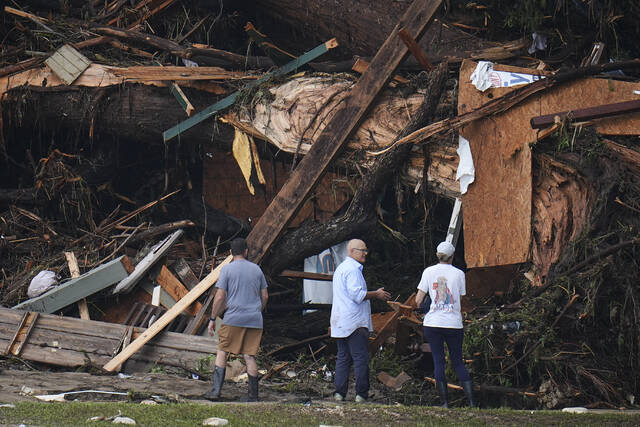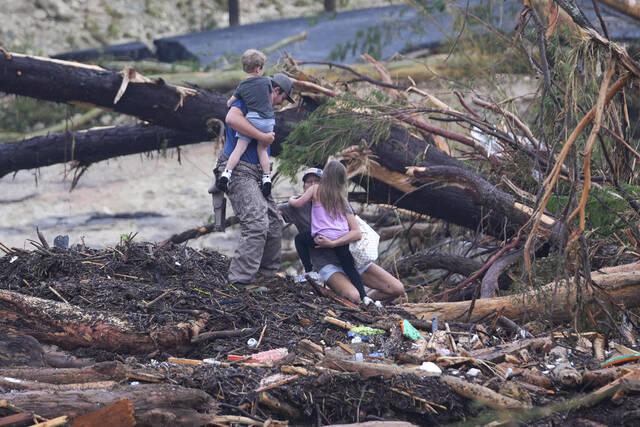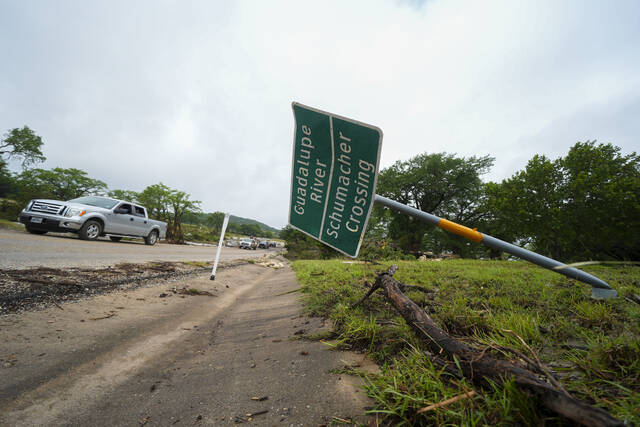Flash floods like the one that swept through Texas are nation's top storm-related killer
The monstrous, swift-moving flood that swept through the Hill Country of Texas on Friday, killing at least 32 people and leaving many more missing, was a flash flood, the nation’s top storm-related killer. Among those missing are girls attending a summer camp.
Authorities said about 850 people had been rescued, including some by helicopter.
Flash floods form rapidly
According to the National Weather Service, a flash flood is flooding that begins within six hours, and often in as little as three hours, of heavy rainfall.
Waters rise so quickly that people are caught off guard, according to the weather service. Many people run into trouble while traveling. If at home or work, the water can rise so quickly that people are trapped before they have time to think about escape.
That is just what happened to residents along the Guadalupe River in Kerr County and the surrounding area after at least 10 inches poured from the sky early Friday morning.
Fast-moving waters along the river rose 26 feet in just 45 minutes before dawn Friday, washing away homes and vehicles. The danger was not over as more heavy rains were expected Saturday, and flash flood warnings and flood watches remained in effect for parts of central Texas.
There was some advance notice in Texas
On Thursday afternoon, the National Weather Service issued a flood watch, estimating rising water of up to 7 inches in spots. A “watch” means conditions are favorable for a flood and people should be prepared, but hazardous conditions might not develop.
But the watch was upgraded to a flood warning overnight, a notice that impacted 30,000 people. A warning is issued when flooding is imminent or occurring, the weather service says.
Lt,. Gov. Dan Patrick said the potential for heavy rain and flooding covered a large area, and “everything was done to give them a heads-up that you could have heavy rain.”
However, when asked about how people were notified in Kerr County so that they could get to safety, Judge Rob Kelly, the county’s chief elected official, said: “We do not have a warning system.”
When reporters pushed on why more precautions weren’t taken, Kelly responded: “Rest assured, no one knew this kind of flood was coming.”
Flash floods can be deadly
Last year, 145 people died in flash floods, according to the weather service. On average over the past 30 years, floods have claimed 127 lives annually.
Nearly half of all flood-related fatalities involve vehicles. Flood deaths affect all age groups.
Many people don’t realize that a car becomes difficult to control in just 6 inches of water and can be swept away in as little as 18 inches. So, instead of finding a detour, people try to drive through water at underpasses or other low-lying areas.
Flash floods can happen anywhere
It can happen anywhere, according to the weather service, which says that “the normally tranquil streams and creeks in your neighborhood can become raging torrents if heavy rain falls overhead.”
An area can be flooded even without rain — if it’s downstream of a torrential rainstorm and a swollen stream heads its way.
Hurricanes, tropical storms, non-cyclonic weather systems carrying heavy rain and dam failures are some weather events that can cause flash flooding. They can happen in rural areas or in large cities.
Remove the ads from your TribLIVE reading experience but still support the journalists who create the content with TribLIVE Ad-Free.




